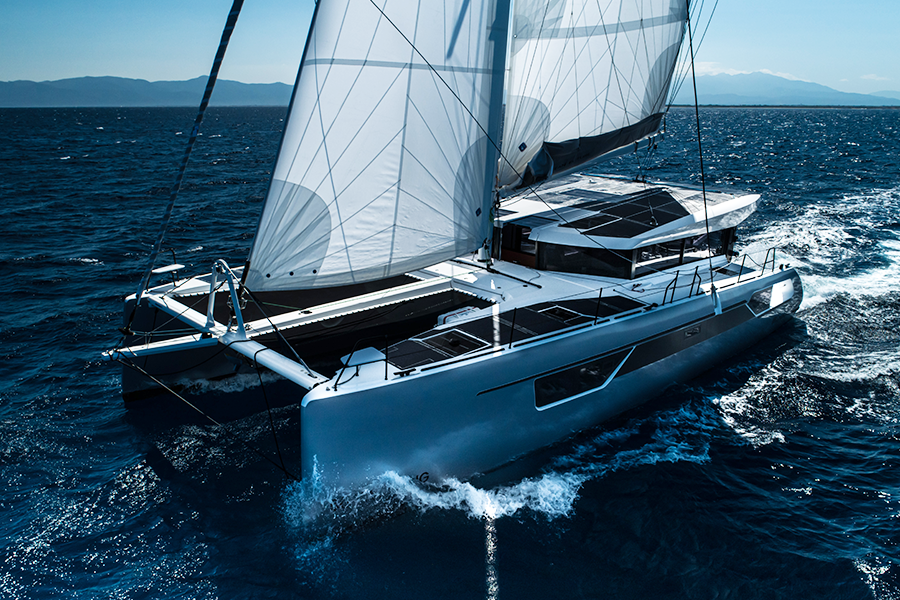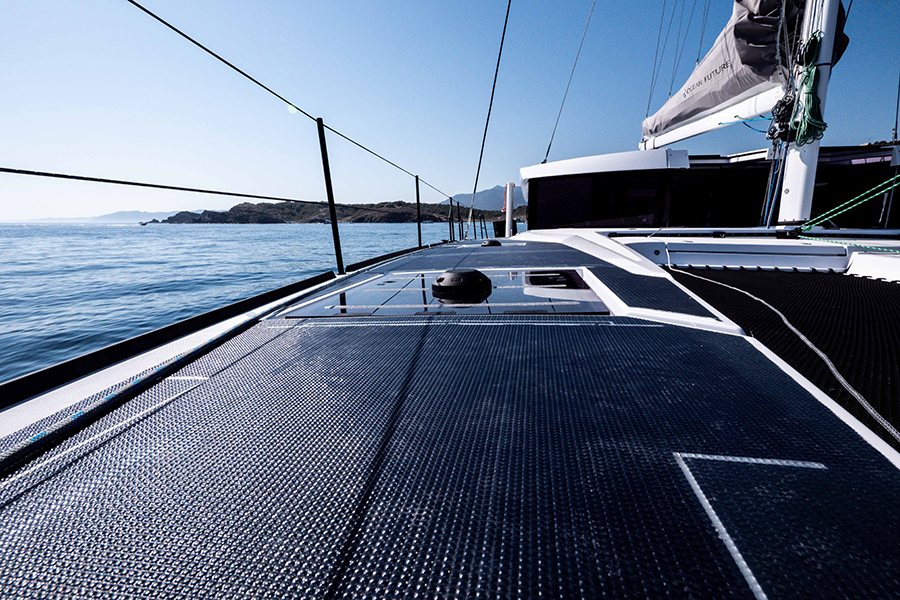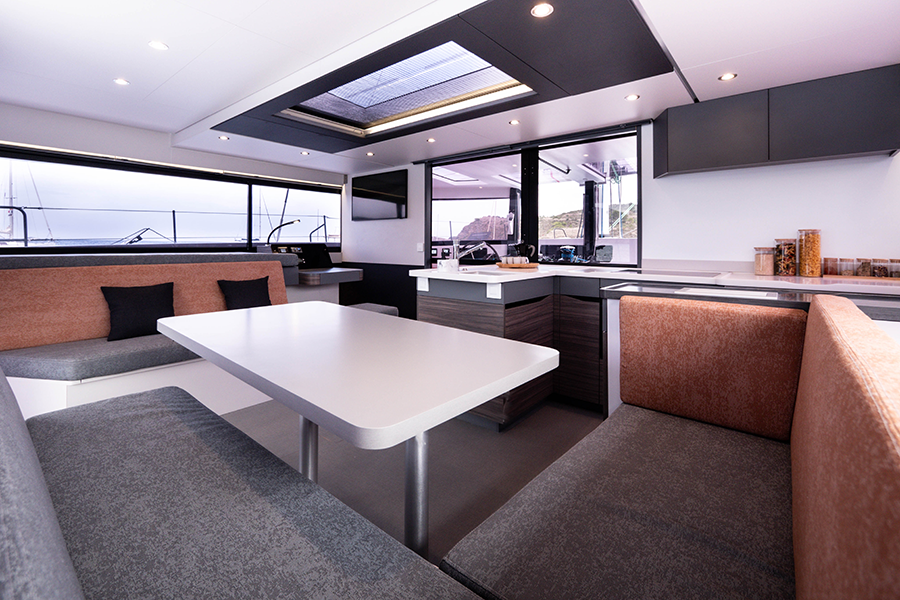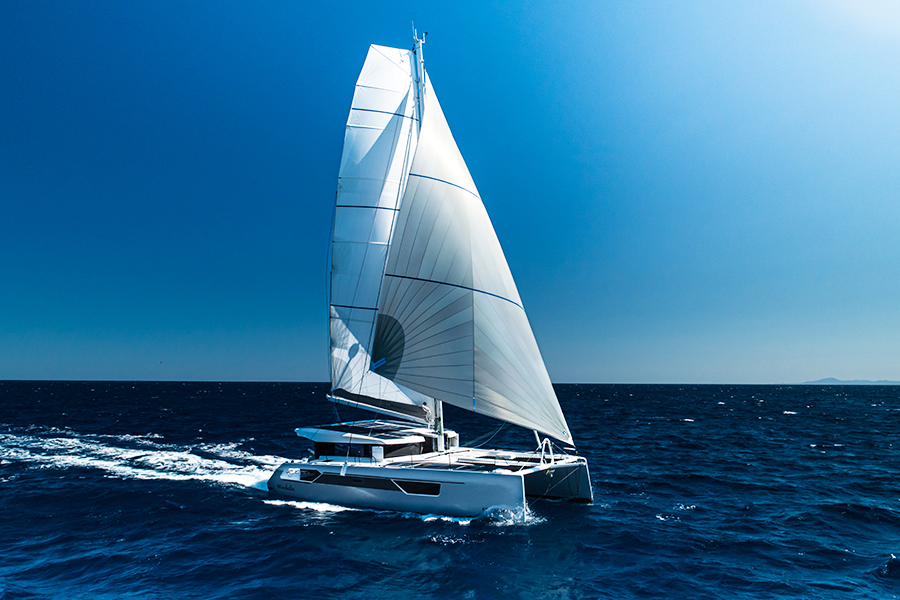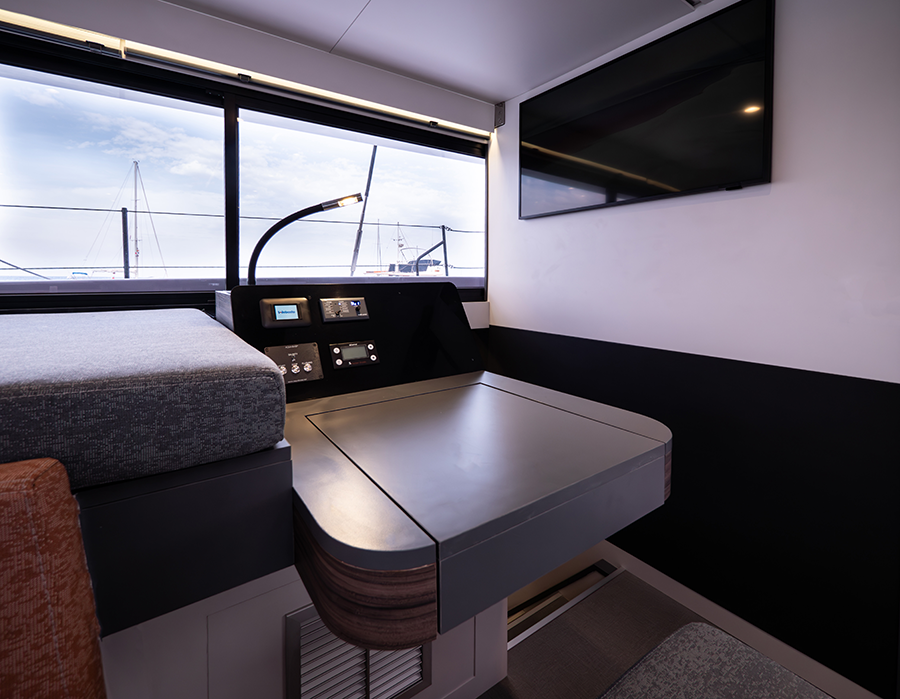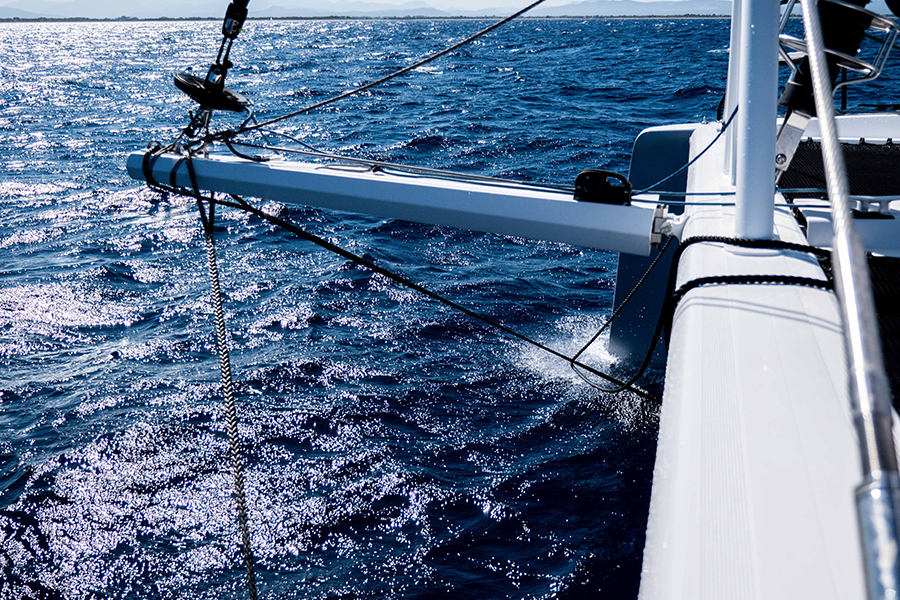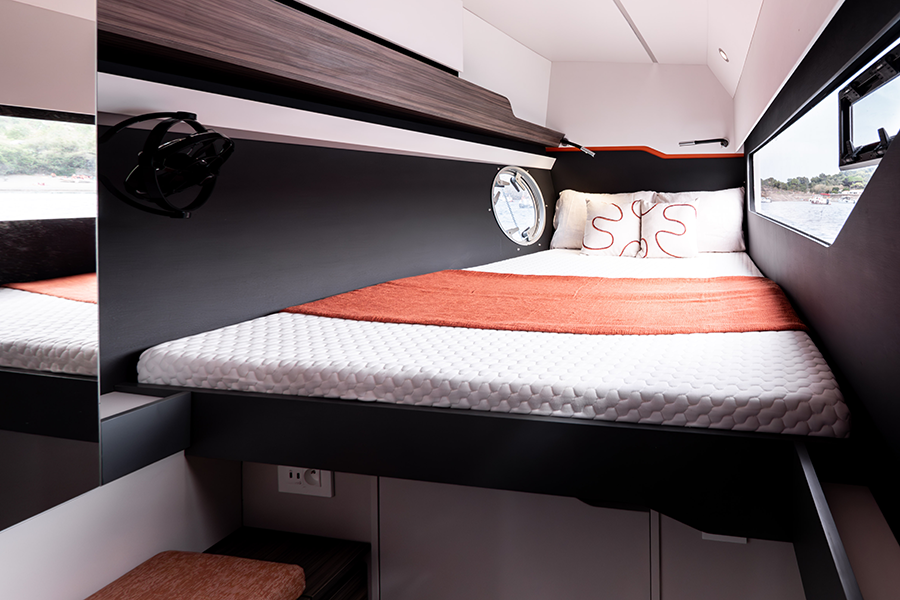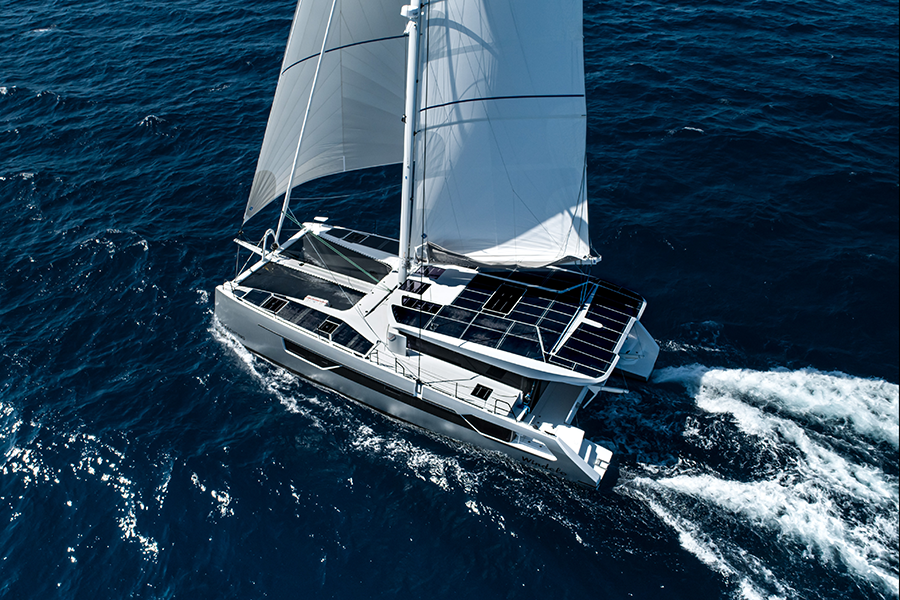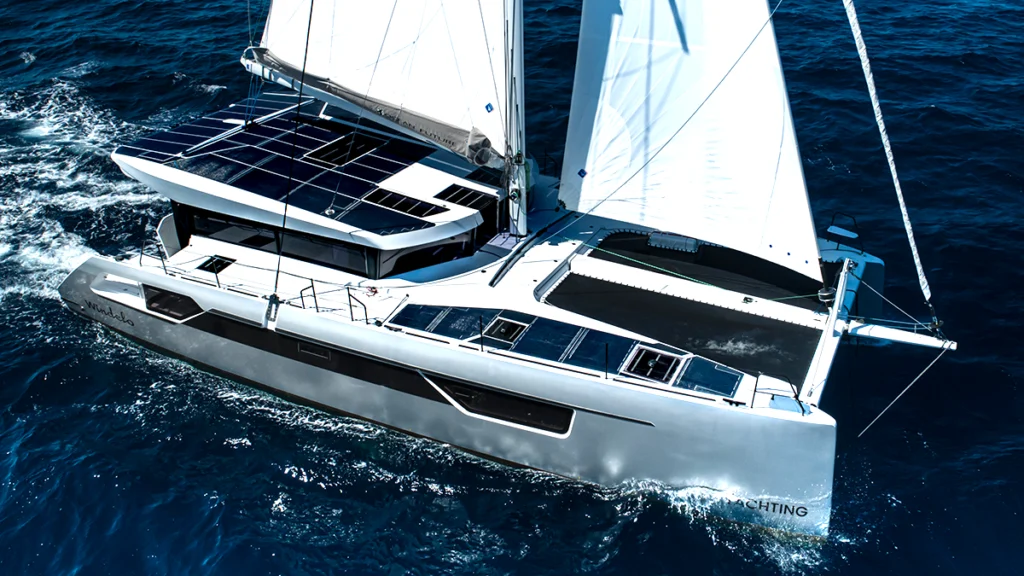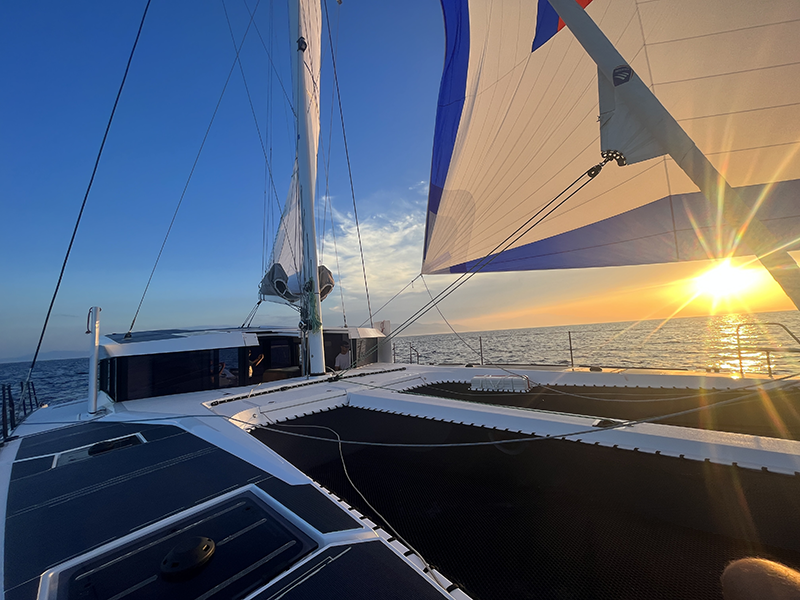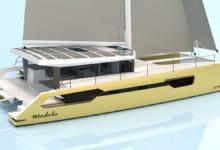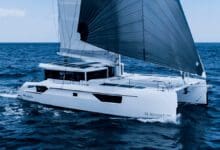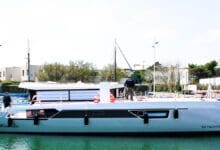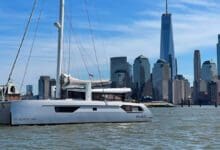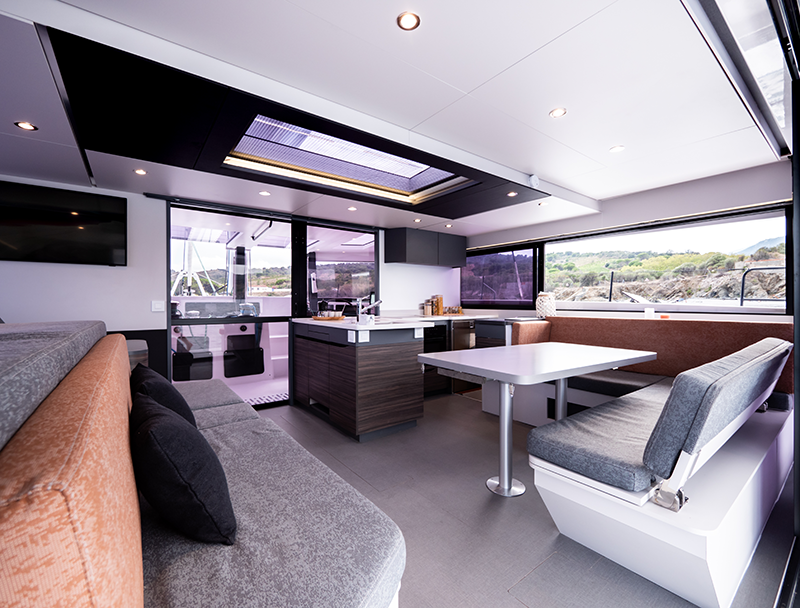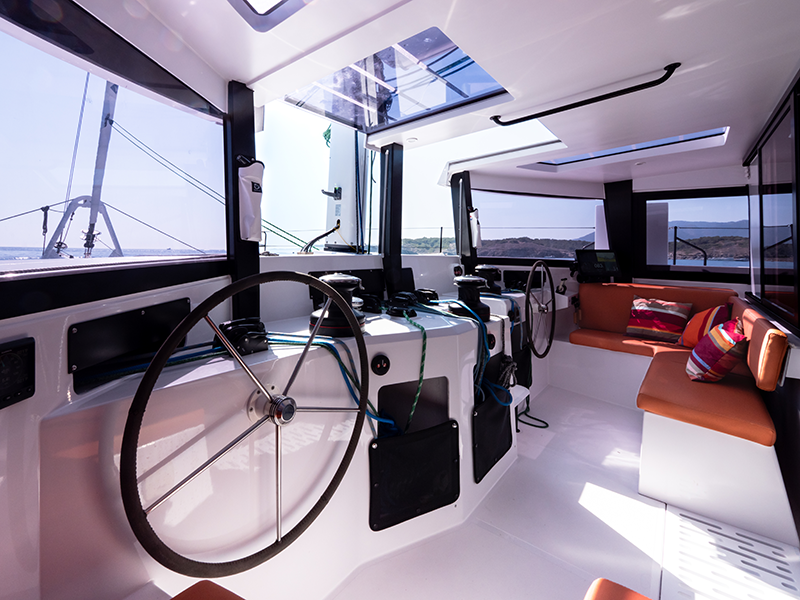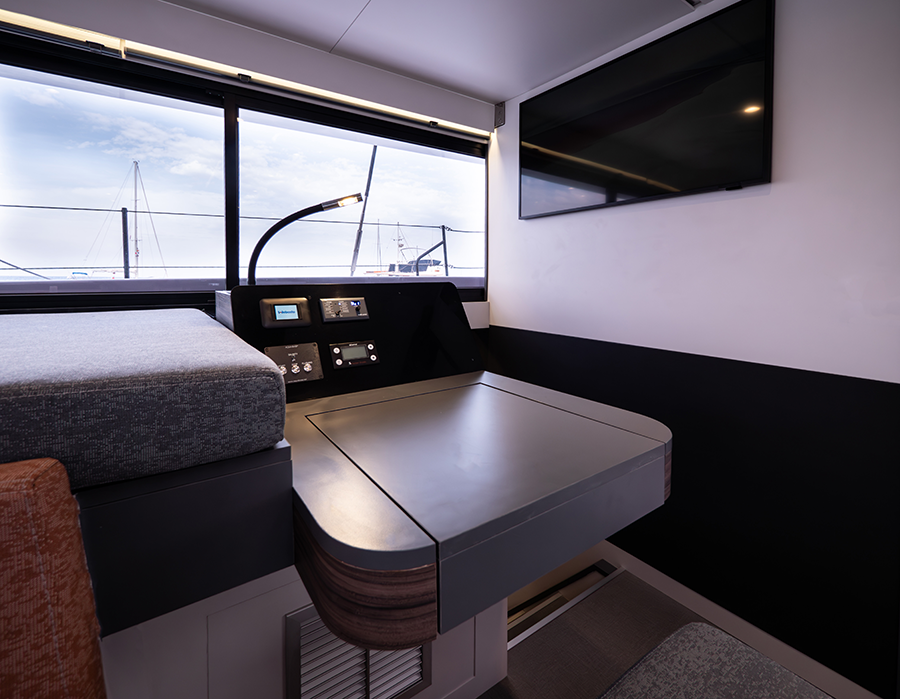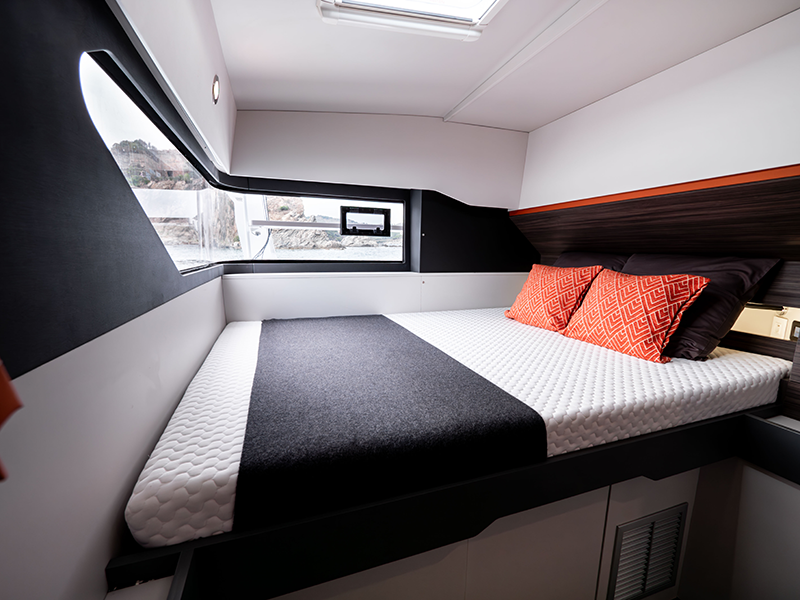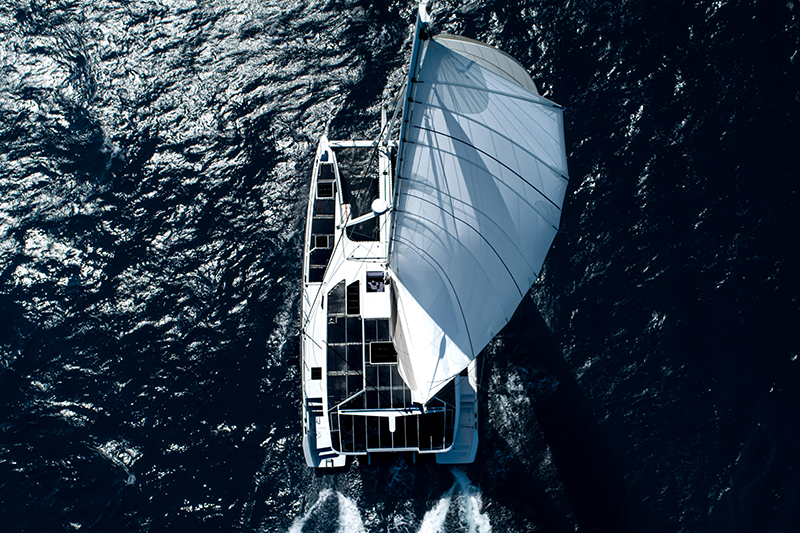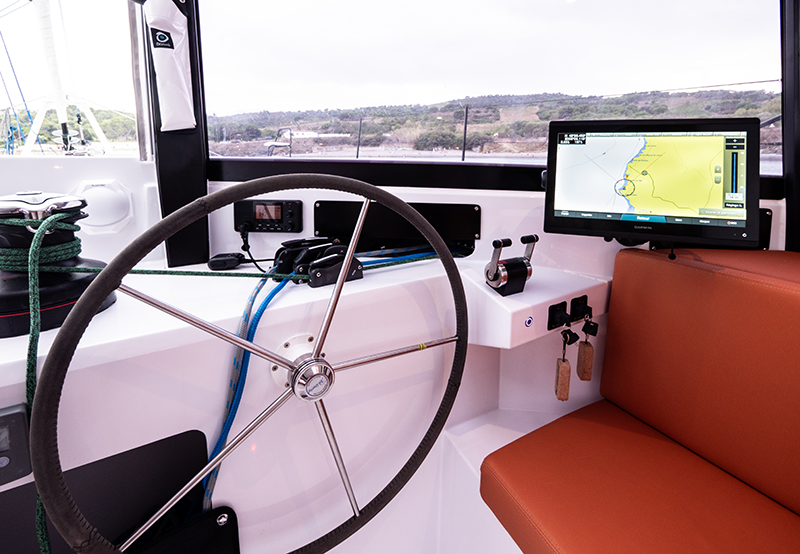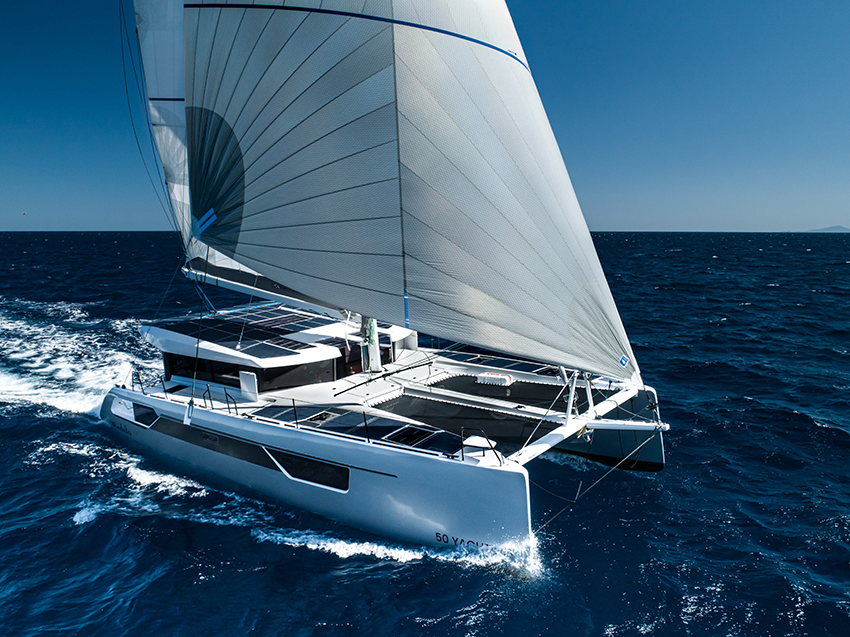There are sailboats (and shipyards) that are born to be different, and thus may be viewed with some skepticism. Fortunately, sometimes the market rewards them. Such is the case with Windelo, the French shipyard founded in 2020, which immediately prioritized sustainability and environmental awareness throughout its production. However, their ambition extended beyond this: the underlying idea of the project was to build fast cruising bluewater catamarans that were not only comfortable and sturdy but also enjoyable to sail. To ascertain whether this objective has been achieved, during the recent International Multihull Show in La Grande Motte, in the south of France, we took the opportunity to test the New Windelo 50 in its Yachting version. A small spoiler? We were impressed!
An Ecological Approach to Construction
As mentioned, sustainability was the starting point for Windelo. The New Windelo 50 is no exception. The structure is made from an environmentally-friendly composite sandwich, incorporating basalt fiber (a byproduct of volcanic eruptions) and PET from recycled plastic bottles. This innovative composite reduces carbon emissions by nearly 50% compared to traditional GRP composite manufacturing methods. Moreover, it has been tailored not only to the structure but also to indoor fittings, furniture, and floors, optimizing the weight of the Windelo catamarans. Inside, FSC wood has been used. This certification by the Forestry Stewardship Council ensures that the wood meets stringent environmental and social standards.
Designed for Long-distance Sailing
Designed by Christophe Barreau and Frederic Neuman for ocean cruising and circumnavigation, this environmentally friendly 50-foot performance bluewater cruiser boasts a racy and stylish look. The New Windelo 50 Yachting benefits from significant upgrades to the decks, superstructure, roof, and layout, marking a substantial move upmarket. With new features and design, this catamaran enhances comfort, style, and autonomy while optimizing weight through reduced composite assemblies.
Upon boarding, we realized that the improvements the shipyard had made, following feedback from its owners, had been intelligently implemented. In terms of comfort, the aft deck has been enlarged to provide an even more comfortable relaxation area, better protected from the elements. The new deck design and larger molds ensure smoother surfaces, while technical systems and a completely new nonskid surface are directly integrated into the mold for increased durability. With its curved and robust surfaces, this all-new 2023 model boasts a dynamic look and a strong personality.
The Interior Saloon… and Exterior too!
The onboard spaces have been intelligently designed, prioritizing ergonomics over superfluous luxuries. Modular flexibility is another cornerstone of the shipyard, allowing customers to choose from a wide range of options. For instance, on the Windelo 50 Yachting unit we tested, there was a tilt/slide “garage door” at the rear of the saloon (alternatively, sliding glass doors can be chosen), which could be easily raised using an electric winch, transforming the saloon and cockpit into a single large livable space. The aft platform, hinged with integrated davits, opens into a large terrace when the boat is at anchor and is raised and closed during navigation to increase safety.
The Central Cockpit: Safety and Conviviality
I must admit, I was quite curious to see if Windelo’s choice to have the forward cockpit would prove successful. Visually, upon entering the cabin, it took me a moment to adjust. However, this feeling was short-lived. Located just aft of the mast, the forward cockpit features two steering wheels protected from the elements and a good view of the sails and bows, as I experienced during the sea trial. All running rigging is within reach, minimizing the need to move about on deck and enhancing safety during navigation. Another aspect that struck me was the conviviality this solution offers. The positioning of the galley (which the owner can choose to be U-shaped or L-shaped) immediately aft of the cockpit allows the helmsman to enjoy the company of the rest of the crew even during meal preparation or for an aperitif while sailing.
The interior layout of the New Windelo 50 can also be tailored to the owner’s preferences. On the model I tested, in addition to the dining area capable of accommodating 6 to 12 people, the aft sofa had a fold-down backrest to transform into an additional relaxation area. I was particularly impressed by the complete chart table and the oversized watch berth.
The Sleeping Quarters: Utilizing Space Intelligently
Given that we are aboard a sporty cruising catamaran, the slim hull entries into the water may limit interior space. However, the shipyard has made the most of their height (two meters above sea level) to ensure generous and suitable living spaces for extended stays aboard. The double beds are comfortable and cozy, leaving ample room for easy movement. On the New Windelo 50 I tested, the configuration with two single berths forward of the port hull caught my attention. When closed, this entire area transforms into a perfect office space with a desk.
Safety First
While the choice of the forward cockpit is clear in terms of safety, there are solutions invisible to the eye yet crucial. Speaking with Gautier Kauffmann, co-founder of Windelo alongside his father Olivier and current Operations Manager, I learned about the presence of crash boxes at the bow and stern of the hulls. In the event of an impact, these crash boxes prevent water ingress into the living quarters of the hulls. In oceans where unfortunate encounters with semi-submerged objects are increasingly common, this is a fundamental precaution.
The Hybrid/Electric Propulsion
The New Windelo 50 is equipped with two electric shaftline engines of 20kW each. The 1120Ah 48V lithium battery bank by MG Energy recharges using renewable energy sources primarily: solar power, hydrogeneration, and wind power (options that the owner can choose). When sailing under motor, the electrical draw, combined with the power needed to counteract hull drag, increases exponentially between 6 and 8 knots. At 6 knots, the New Windelo 50 consumes 10kW and has a range of nearly 4 hours.
When the energy consumed is not offset by renewable energies, the 18kW backup 500L diesel generator starts up to supply the electric motors and recharge the batteries, ensuring a range of 1100 nautical miles. It starts up automatically when the batteries are low and/or when the required power exceeds what the batteries can supply.
But Windelo’s commitment to renewable energy doesn’t stop here. The unit we tested, in fact, was equipped with solar panels for a total of 4500 watts (but the owner can choose to install a greater number, for a total of up to 6000W).
All of this without forgetting the possibility of also utilizing the hydrogeneration system. Once the sails are raised, the propellers switch to hydrogenator mode when the motors are idle. The hydro-generation utilizes the water flow through the propellers to generate electricity. On average, you regenerate 1 kWh per engine while sailing at 10 knots. If you solely rely on hydrogeneration to recharge your battery bank, you can fully recharge it in one day of sailing under sail power.
Setting Sail
After familiarizing ourselves with the vessel’s features and discussing its peculiarities with the Windelo team, it was time to leave La Grande Motte. As we moved away from the pier, I took the opportunity to study the Boat Management System developed by the French shipyard in collaboration with its partners to connect all installations onboard. These systems communicate through a user interface that provides accurate readings of energy production and consumption onboard, as well as the status of each piece of equipment. You can manage the catamaran’s performance and steering from your navigation display: electric propulsion system, battery and tank levels, lighting, electrical and electronic systems onboard, battery charge status, maintenance, as well as all navigation data.
When hoisting the mainsail and unfurling the headsail, I appreciate the convenience of having all maneuvers centralized in the central cockpit. Everything happens with maximum comfort and safety, and within seconds, we are ready to sail. The slim hulls perform their job perfectly, allowing us to “ride” the waves instead of cutting through them, maintaining speed without loss.
Moreover, I am impressed by the responsiveness of the New Windelo 50. With approximately 13 knots of apparent wind and sailing close-hauled at 35 degrees (though one can dare to tighten a few degrees more), we maintain a consistent speed always above 7 knots. However, what impresses me even more is during tacking: the New Windelo 50 never drops below 4 knots of speed and, notably, accelerates within seconds.
As the sun descends towards the horizon, we decide to use the Code Zero, and Neptune seems to indulge us with stronger winds. We adjust the daggerboards, keeping constantly close to 60 degrees off the wind, and it feels like we are building momentum…
-At 15.2 knots of apparent wind, we sail at 9.8 knots.
-At 18.4 knots of apparent wind, we sail at 11.4 knots.
-With 21.3 knots of apparent wind, we touch 13.5 knots.
These performances are even more impressive because, without the instruments and the wake we leave behind, it would hardly seem like we are sailing at these speeds. While sailing, we can always converse without raising our voices and in total relaxation. This is an aspect not to be underestimated for those aiming to cover long distances (which in my opinion is the true purpose of the New Windelo 50).
As we return to port, I begin to write the considerations you find in this article, and I realize another peculiarity of the forward cockpit: even under motor navigation and with an annoying following sea, one can write or read without any discomfort, as the rolling is minimized.
The Verdict from Sail Universe
The New Windelo 50 has not disappointed expectations; indeed, under certain perspectives, such as performance, it has even exceeded them. Its construction methodology makes it a unique offering in the nautical landscape (to our knowledge, no one has ever used basalt fiber), and the fact that it has sold 15 units (the shipyard has sold the same number of units of the Windelo 54 as well) in so few years confirms that the intuition was correct. Whom do we recommend it to? Undoubtedly, to those who want to sail without being constrained to return to port, to lovers of fast sailing, but also to those who want to do so without stress!
New Windelo 50 Yachting version specs
Length: 15.24 m
Beam: 7.95 m
Draft of standard version: Max draft 2.32 m, Min draft 1.03 m
Light displacement: 11.2 t
Freshwater tank: 400 l
Blackwater tank: 200 l
Max. number of cabins: 4 (+1 skipper)
Max. number of people: 12
Sails
Type of rigging: Sloop
Sail area upwind: 184 m²
Sail area downwind: 253 m²
Mainsail area: 92 m²
Foresail area: 43 m²
Gennaker area: 161 m²
Motor
Type of engines: Electric and hybrid engines
Engines power: Electric 2 x 20 kW
Generator: 18 kW (or 2 x 18 kW on option)
Engine transmission type: Shaftline
Energy type: Electricity and diesel
Batteries park: 1120 Ah 48 V battery bank (53.8 kWh)
Green energies: Solar, hydrogeneration, wind turbine
Fuel tank: 500 l
Price
Starting price from 1 130 000 € EX-VAT
Windelo Website: click here

